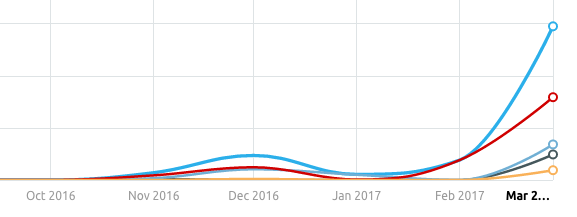Digital Strategy, Digital Transformation, Music, Product Management
Any digital marketing agency or digital marketing consultant will tell you that promoting your music online looks very different in 2017 to how it did in the year 2000. Where then, you had your own website, maybe a MySpace page (remember those?!) and had fans subscribe to a mailing list that actually sent cards through the post, now, it’s a little bit different.
Fast forward, and it’s likely that where you now interact most with your fans is through Twitter, Facebook or some other social media platform. These platforms are great, and you should continue to engage with fans there, but they come with their own set of risks.
So what’s the solution?
Development of 1st party data is one of the main things concerning marketers from all industries at the moment – almost 3/4 of marketers surveyed have said that 1st party data provides the greatest insight into their customers and of those, 81% say they use 1st party data to get greater return on investment (ROI) from their customers.
Just what is 1st party data?
1st party data is information that you collect yourself from your fans. It typically would sit somewhere within your own technology stack, sometimes using a Customer Relationship Management (CRM) tool. You can get pretty fancy with how you maintain and collect it, but essentially it boils down to being information that you collect and you own. Since you are collecting it yourself, direct from your fans, it is deemed to be the most accurate set of data.
You can do this via your own website, a property that you control and can update on your own terms. This allows you direct access to your fans, where you own the data and don’t have to rely on 3rd party platforms for feedback on what they think of your new music. Once you own that relationship, what you do with it and how you communicate with them is up to you (within the realms of the law of course).
The diagram below shows how you can collect your own 1st party data, collect 3rd party data from the social platforms you are already using, and generate a bigger picture of who your fans are and how you should communicate with them. For example, you may have a fan who likes you on Facebook, has signed up to your email newsletter but you can see has yet to purchase tickets to your next gig (using email address as the common identifier). This then would allow you to send an email to this person that is more effective than sending a blank “ticket sale” reminder email to your entire database.

As a clever person once said, knowledge is power and the more you can talk to your fans, the more you know, and the better your relationship with them will be. So don’t be beholden to Facebook news feed changes and find yourself an alternative means of communicating with your fans.
Main photo credit: Photo by Jesse Darland on Unsplash

